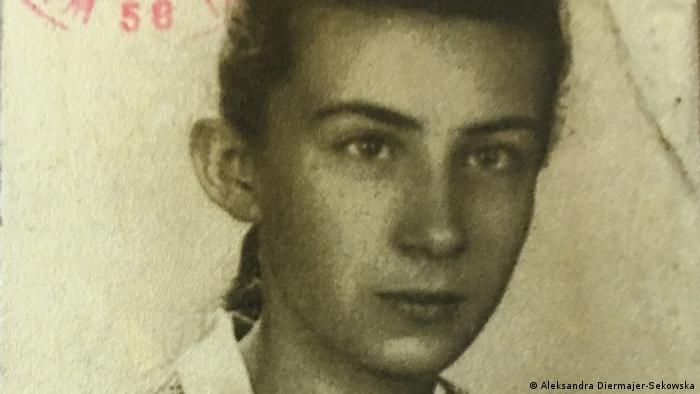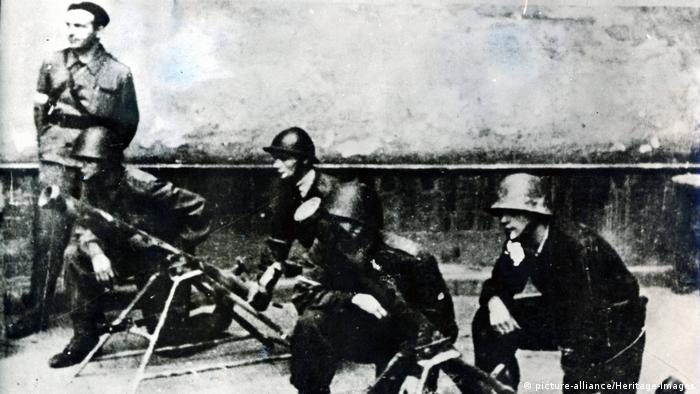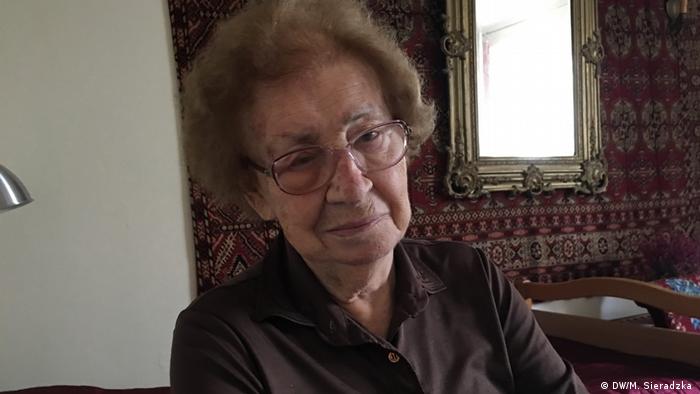Aleksandra Diermajer was broke out 15, as in the Warsaw uprising against the German occupiers. She is one of Thousands of young people who resisted. Even in the captivity they went as a volunteer.

Aleksandra Diermajer-Sękowska as a teenager: Pseudonym of “Olenka”
1943 joins Ola the scouts. For four years the war raging in Poland. The young people secretly goes to school and wants to be a soldier. It was a “natural consequence” of the Patriotic upbringing in an educated Protestant family, recalls Ola today, with the full name Aleksandra Diermajer. It had been perceived in their circle of acquaintances as a “good girl from a good home”. With the scouts you should help, this “load” to get rid of. Ola wanted to be brave and courageous.
With a white collar in the fight
In the summer of 1944, the Polish home army decides to revolt against the German occupiers. The Start is for the 1. August planned. A week before the Ola, which takes on from there, the Pseudonym of “Olenka” is delegated, by the Polish home army in the so-called military social service to protect the civilian population. You will be in the communications and medical field. The decision to go in the uprising, comes easily to her. She considers it a “duty”.

Soldiers of the Polish home army during the Warsaw uprising in August 1944
The mother is desperate. Early on the Morning of 1. August, it equips your daughter with a white starched blouse collar. “Remember to change them every day, to look chic,” said her mother. Both thought that they separated only for a short period of time. But again, it came only three years later.
Women in revolt
50,000 soldiers, some without military preparation, many of them young people, were enthusiastic in the fight for Warsaw. The Eastern front moved closer, the Red army was already on the other Bank of the Vistula, German troops left the city. It was hoped to the aid of the allies. The poles would ultimately remain alone, knew nobody at that time. The uprising ended in a massacre of the civilian population. The city was laid out after the surrender in rubble and ashes.

Witness Diermajer-Sękowska: “I think I was just too little to brave and that is why I survived”
Olenka was one of the 5000 female insurgents. Some fought with the weapon in the Hand or mounted mines on the tracks to blow up German trains. But most were, like Olenka, communication and medical service.
Their main task was to deliver milk for the small children in cellars and bunkers. “Each milk bottle was placed in a metal container to protect against Breakage. To the container a strong, long wire was attached, you should keep in Hand, if you had to behind the barricade, on the floor, by the side of the road to the other to crawl,” recalls Aleksandra Diermajer. Then, the container was pushed further, until someone picked up. “And then to return, crawling, to the other side. So a friend of mine during the shelling of the barricade was badly hurt. So also milk transports were dangerous to life.”
The worst is the lack of sleep was. There were no seats in the crowded Quarters of the insurgents. Ola was not a soldier and thus was assigned to, no place to Sleep. “A couple of Times, I managed to sleep in an empty apartment. On the floor, glass and stones were, so I tied six chairs with a belt to each other, and me lying down.” A pain – even for a 15-Year-old.
Voluntarily in captivity
After the surrender, they wanted to send children and young people home. But many do not know where you should put your parents in the ruins of Warsaw are looking for. “I would have been able to go home, but together with my sister we have found that we have to search in Warsaw, nothing more. We wanted to stay with the other scouts together. No one wanted to let the group separate.” Most of the children do not. The youngest of the Polish prisoners of war in Germany was, according to Polish historians, it was a eleven-year-old insurgent.
In solidarity in the camp
Olenka was one of the 3000 female insurgents from Warsaw, which went in cattle cars to Germany. About Fallingbostel and Bergen-Belsen Olenka came in December 1944 to prisoner of war camp “Stalag VI C” in Oberlangen, lower Saxony, Germany. There about 1700, women were housed from the Warsaw uprising. They ranged in age from 14 to 60 years, nearly 100 were under the age of 18.

Poland after the Second world war in Displaced-Person camps Maczków in lower Saxony, Germany
Olenka recalls great solidarity actions with those who left Warsaw pregnant and at the beginning of 1945 their children to the world brought. “In the first birth almost each of their own garments sewn what diapers or caps has. Then it submitted also for the next baby. Old cartons were weighed.” Ten Polish children came under these conditions in upper long for the world.
A new life
12. April 1945 the camp was liberated by the 1942 in Scotland, established by Polish armored division under the command of General Stanislaw Maczek. Shortly thereafter, a few kilometres to the South of the city municipality was charged to Haren (Ems) under Polish administration, and as a Whole to a DP, a Displaced-Person camp.
German inhabitants were evacuated to make room for more than two years for 5000 former Polish prisoners of war, concentration camp prisoners and forced labourers in the place. In the local Polish school Aleksandra Diermajer has done her graduation and her future husband, also a Warsaw insurgent, met.
Today, the retired librarian asks why she actually is remained safe. “Every year, on the 1. August, I go to the graves of my friends, but also to those of unknown persons killed in the uprising. They are all dead and I live, as if nothing had happened. My Evangelical pastor tells me that it is the determination. But I think I was just too little to brave and that is why I survived.”